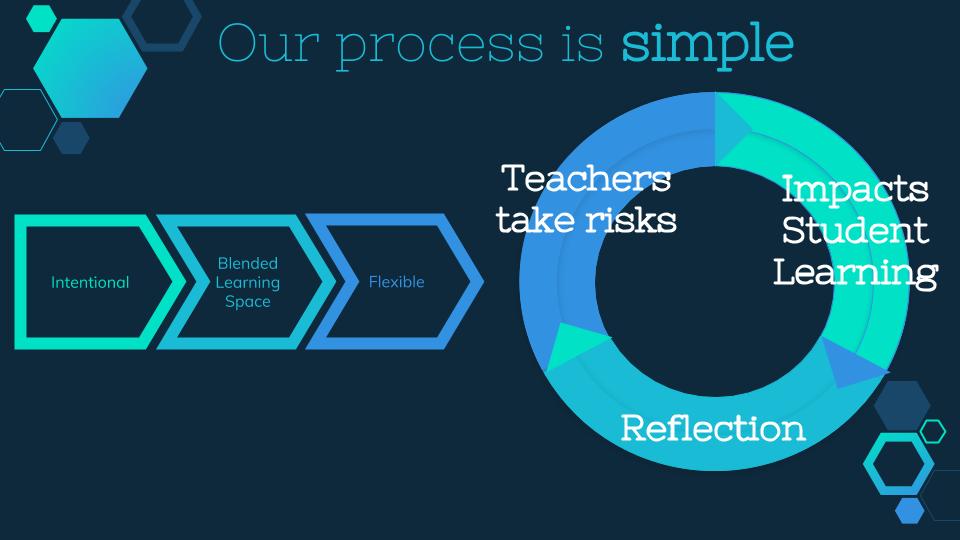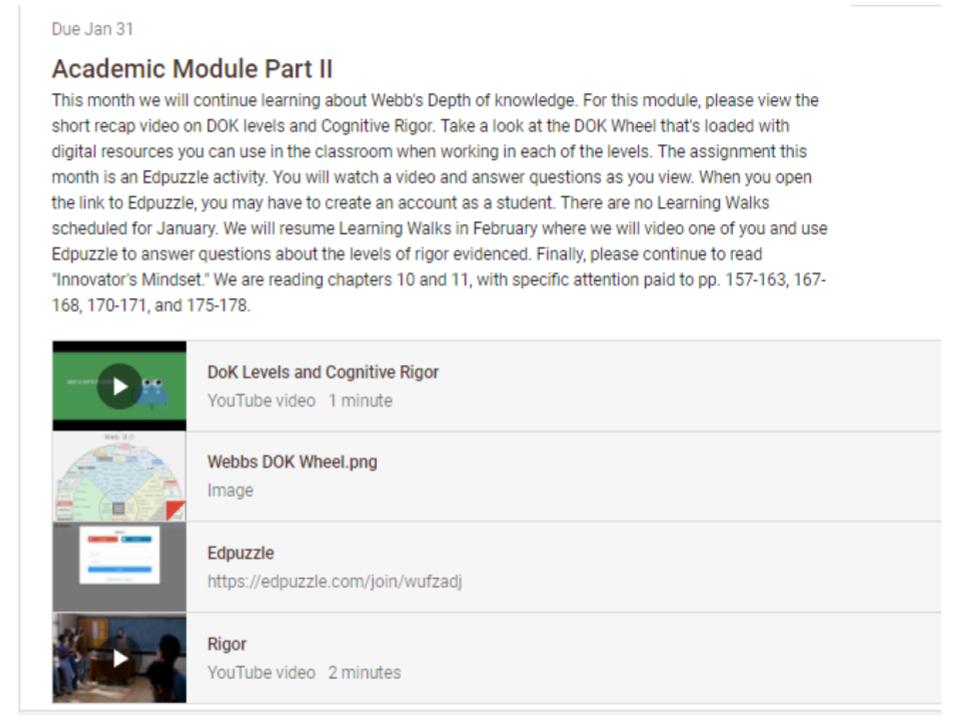During a routine flip turn, she felt it slip out of place – like there was a void in the middle of her knee. After a few laps, she felt it pop back into place – accompanied by significant pain. This time, rest and relaxation, therapeutic swims, ice, and elevation did not help the pain subside. With fear and anxiety, we headed to the orthopedic surgeon, praying that we did not need his full range of services.
Diagnosis
Patellar Subluxation: The official medical term for dislocation of the kneecap (patella). Kneecap instability.
You see, your kneecap (patella) attaches near the bottom of your femur. As you bend and straighten your need, your kneecap moves up and down in a groove at the bottom of the thigh. Several muscles and ligaments hold the kneecap in place, and if these are injured, the kneecap can move out of its groove. This is exactly what happened to my daughter. The weakness of the muscles that hold her patella in place allowed her kneecap to slip to the outside of the knee, stretching the medial-patella-femoral-ligament.
Good news: No surgery!
Tough news: Rest and ice are not enough for a full recovery.
For a month, she invested in intensive physical therapy – that was specific to her injury, scaffolded to her response to therapy, and graduated to measure growth – all geared to increasing the strength of the muscles that stabilize her patella. Within days, there was measurable growth. That small growth encouraged her to diligently complete her home exercises, which fed the growth of her sessions. Slowly, the pain subsided. The weight bearing exercises increased. Range of mobility expanded.
Today, five weeks later, she was released to return to full participation in the pool: kicks, flip turns, dives. But, the physical therapy continues.
So, what is Physical Therapy?
Physical Therapy: Care that helps you function, move, and live better.
In thinking about my new role as an instructional technology facilitator, I have been wondering why people are resistant to try new initiatives, reflect deeply about current practices, and embrace change. And, more importantly, how do we move past this self-imposed barrier? I believe that the answer might be in Physical Therapy!
We often look at Physical Therapy as a regimen that follows a major surgery. But, our experience has been different. In my daughter’s case, physical therapy was a response to develop stability to prevent future injury. My daughter took two hours out of her week to meet with a professional who guided her through intense exercises and who prescribed her with work to do on her own between visits. Let’s use this strategy with instructional growth…
PT appointments = PLC meetings led by educational leaders/coaches, during which we dive deeply into instructional methods, practice, model, plan, and develop.
PT at home = Independently complete or practice tasks started in PLC. Prepare for next meeting by collecting data, penning questions, and reflecting on what is or is not working with your current regimen.
Repeat
While the PT (PLCs) are more frequent in the beginning, you quickly recognize the value of these appointments – in time, productivity, and results. Over time, you may scale back on the scheduled PLCs with experts, however you find yourself creating more organic opportunities for this instructional conversation with other passionate educators. Before long, you recognize that you no longer *need* the coach as a coach, but you long for the coach as a collaborative partner who brings ideas, passion, and energy to a rich discussion.
You are invigorated with lessons who have received an overdue face-lift, developed a relationship with a collaborative partner, and created a sustainable method to revitalizing your educational environment.
You prevented the educational injury commonly referred to as “burn out”.
With this knowledge, who wouldn’t invest in educational PT?

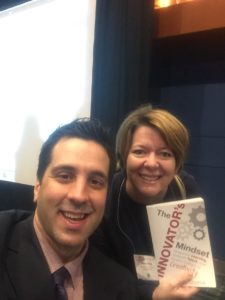 Why this book study? I love The Innovator’s Mindset, as this text served as a catalyst in changing my educational trajectory. Not only was it the professional read for #NCDLCN ’17, George Couros served as the keynote for that year’s
Why this book study? I love The Innovator’s Mindset, as this text served as a catalyst in changing my educational trajectory. Not only was it the professional read for #NCDLCN ’17, George Couros served as the keynote for that year’s 
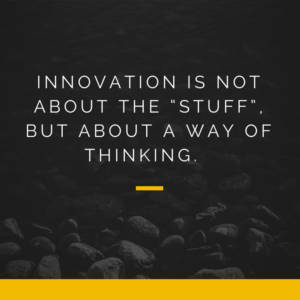 Innovator’s Mindset Day 02: Innovation does not require technology, supplies, or a novel strategy. Instead, it requires a complete shift in mindset. Swap a paper for a blog post. Create Ted-Talks instead of presentations. Solve a campus problem. Create opportunities for relevant work to present to an authentic audience that utilizes students’ voices. That’s innovation. #InnovatorsMindset #InnovatorsMindsetCh1
Innovator’s Mindset Day 02: Innovation does not require technology, supplies, or a novel strategy. Instead, it requires a complete shift in mindset. Swap a paper for a blog post. Create Ted-Talks instead of presentations. Solve a campus problem. Create opportunities for relevant work to present to an authentic audience that utilizes students’ voices. That’s innovation. #InnovatorsMindset #InnovatorsMindsetCh1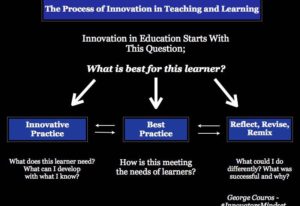 Innovator’s Mindset Day 03: Number 1 Question: What is best for this learner? followed by Would I want to be a learner in my own classroom? Have an honest self-reflection: What is working (or isn’t)? Survey your students. What can be tweaked? What needs to be tossed? Where can you turn for help in brainstorming ways to improve the learning experience for everyone in your learning space – including you? #InnovatorsMindset #InnovatorsMindsetCh2
Innovator’s Mindset Day 03: Number 1 Question: What is best for this learner? followed by Would I want to be a learner in my own classroom? Have an honest self-reflection: What is working (or isn’t)? Survey your students. What can be tweaked? What needs to be tossed? Where can you turn for help in brainstorming ways to improve the learning experience for everyone in your learning space – including you? #InnovatorsMindset #InnovatorsMindsetCh2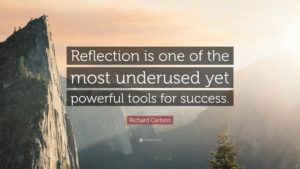
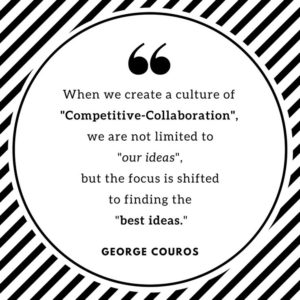 Innovator’s Mindset Day 05: Asking educators to embrace innovation requires a growth mindset, taking risks, and failing forward. For many, this is a huge challenge. Building deep relationships ensures a safe place to try new practices with minimal fear, judgment, or negative consequences. How do I start? I show my own vulnerability first. If I am the first to ask for help or fail, hopefully, others will follow. Remember, we are all learning together! #InnovatorsMindset #InnovatorsMindsetCh4
Innovator’s Mindset Day 05: Asking educators to embrace innovation requires a growth mindset, taking risks, and failing forward. For many, this is a huge challenge. Building deep relationships ensures a safe place to try new practices with minimal fear, judgment, or negative consequences. How do I start? I show my own vulnerability first. If I am the first to ask for help or fail, hopefully, others will follow. Remember, we are all learning together! #InnovatorsMindset #InnovatorsMindsetCh4 nnovator’s Mindset Day 06: The initiative that I would most like to see is Professional Development FOR teachers BY teachers – tech tools, innovative strategies, book studies, everything. I model this through book studies like this that I participate in and share with colleagues + I am leading a district initiative that launches our first 10 courses later this year. #InnovatorsMindset #InnovatorsMindsetCh5
nnovator’s Mindset Day 06: The initiative that I would most like to see is Professional Development FOR teachers BY teachers – tech tools, innovative strategies, book studies, everything. I model this through book studies like this that I participate in and share with colleagues + I am leading a district initiative that launches our first 10 courses later this year. #InnovatorsMindset #InnovatorsMindsetCh5 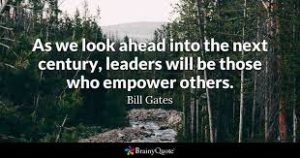 Innovator’s Mindset Day 07: I build leadership capacity in my students by providing them with a nearly unlimited amount of choice in my classroom – seating, pacing, order, grouping, environment, artifact of mastery. I also weave in Teacher Progress Reports that provide feedback for me based on what students think is most important – and, together, we problem solve ways to improve what they decide is not “up to par”. With feedback and reflection a two-way street, we all have ownership of the learning environment. #InnovatorsMindset #InnovatorsMindsetCh6
Innovator’s Mindset Day 07: I build leadership capacity in my students by providing them with a nearly unlimited amount of choice in my classroom – seating, pacing, order, grouping, environment, artifact of mastery. I also weave in Teacher Progress Reports that provide feedback for me based on what students think is most important – and, together, we problem solve ways to improve what they decide is not “up to par”. With feedback and reflection a two-way street, we all have ownership of the learning environment. #InnovatorsMindset #InnovatorsMindsetCh6